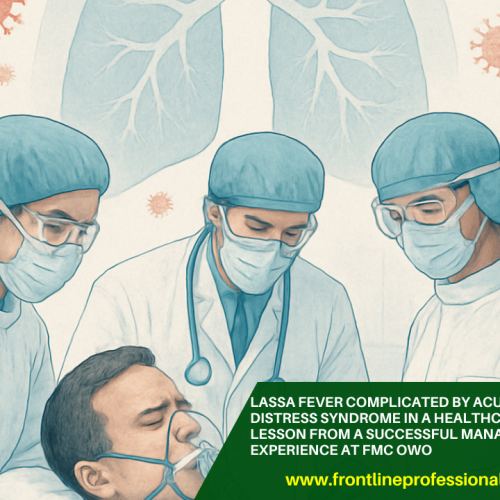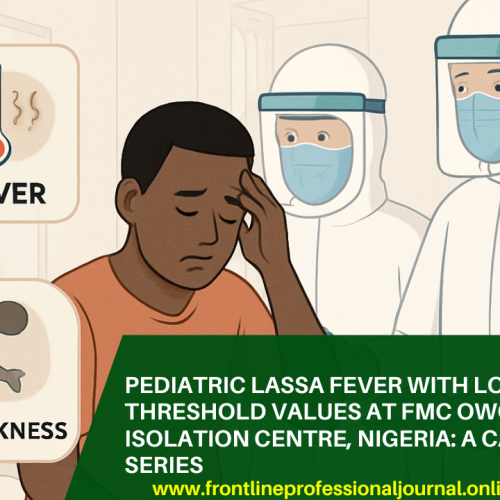Akaninyene Mark and Ofonime Johnson
Correspondence to:
Dr Akaninyene Mark
Department of Community Medicine, University of Uyo Teaching Hospital, Uyo
Email: [email protected]
Citation: Akaninyene, Mark and Ofonime Johnson. (2024) Prevalence, perpetrators and Pattern of
Disclosure of adolescent sexual abuse in south-south, Nigeria. Frontline Professionals Journal, 1(1),
8–24.
ABSTRACT
Background: Sexual abuse among adolescents is a serious public health problem. This study aimed
to determine the prevalence, perpetrators and pattern of disclosure of adolescent sexual abuse in
Akwa Ibom State, Nigeria.
Methodology: This was an analytical cross-sectional comparative study involving 740 public senior
secondary in-school adolescent students (14-19 years) from 4 selected schools (3 rural and 1 urban).
An adapted, self-administered pre-tested, semi-structured questionnaire was used for data collection.
Data analysis was carried out with Statistical Package for Social Sciences version 25 software.
Logistic regression analysis was used to determine the predictors of unwanted sexual experiences in
adolescents, and statistical significance was taken at p-value ≤ 0.05. Results: The mean age of respondents was 17.0 ± 1.52 years (p<0.001). The prevalence of unwanted
sexual experiences from the rural schools was 72.2% compared to 49.7% in urban schools. A higher
proportion of respondents in urban compared to rural schools, (28.1%) and (24.9%) had school mate
as the commonest reported perpetrators of sexual abuse. (χ2=11.65, p= 0.040). Also a slightly higher
proportion of respondents in rural schools, (27.3%) compared to (26.5%) from the urban schools
mentioned Boyfriend/ Girlfriend as the perpetrators. The majority of respondents in both settings
had not disclosed the sexual abuse. There was a slightly higher proportion of disclosure among
respondents in the urban (34.3%) compared to (29.4%) (p=0.336). Of the proportion of respondents
that had disclosed the abuse, a higher proportion of respondents in the rural 24(51.0%) had disclosed
the abuse to family members, compared to 20(34.5%) in the urban (p=0.185). A higher proportion
of respondents in the urban 19(32.8%) that disclosed sexual abuse were helped compared to 13
(27.7%) in the rural (χ2=12.82, p=0.012).
Conclusion: This study shows a high prevalence of sexual abuse among the respondents with
boyfriend/girlfriend and schoolmate as the commonest perpetrators where the majority in both
setting victims had not disclosed nor reported. There is a need for reproductive health education in
schools and the establishment of Adolescent Friendly Health Services (AFHS) to cater for the sexual
and reproductive health needs of adolescents in school







